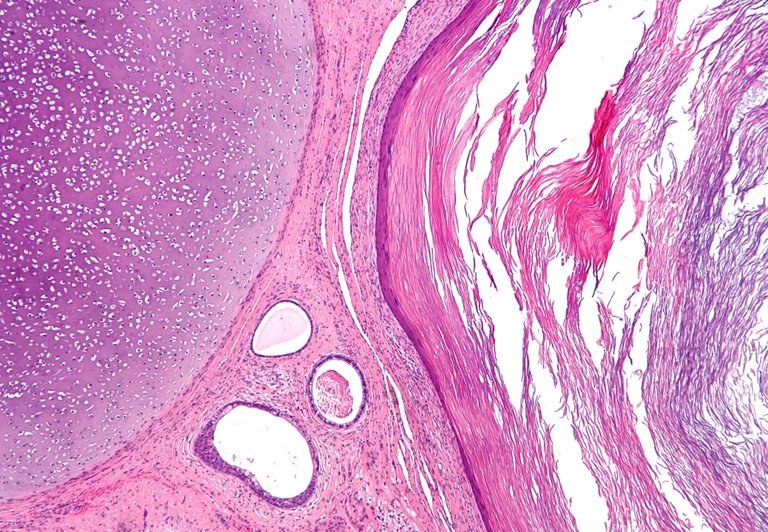My last update ended on a happy note. I'd recovered from surgery and my scans were all good. Unfortunately, the good news was short lived. For those following my story, this post will fill in the last couple months while I was away from steemit. I'll also explain a little bit more about teratoma (briefly covered in Part V).
A Not So Routine Checkup
At the start of 2017, things were looking up. For the first time in over a year, I was feeling pretty good. I had gotten back into swimming which was really helping me stretch out the scar tissue from my last surgery. I even got the chance to do some hiking - see my photos in this post. When the time came for my routine scans and tests in March I was nervous, but not too concerned. After all, I felt great. This time around I just had some blood drawn and a chest x-ray. Quick and painless.
A few days later, I get a call from the nurse asking me to schedule a CT scan for the next week. Apparently, the doctor didn't like what he saw on the x-ray and wanted a better look. She told me not to worry and that it wasn't a big deal, but I could hear the concern in her voice. The following week was trying for me. As I've mentioned before, the uncertainty can be incredibly difficult to deal with. Flash forward a week and half and I get the results of the CT scan. As I feared, they found that the size of the lymph nodes in my chest and neck had increased. The doctor informed me I would need "surgical resection".
What is Teratoma?
 Micrograph of a teratoma showing tissue from all three germ layers: mesoderm (immature cartilage - left-upper corner of image), endoderm (gastrointestinal glands - center-bottom of image) and ectoderm (epidermis - right of image). Image and caption from Wikipedia.
Micrograph of a teratoma showing tissue from all three germ layers: mesoderm (immature cartilage - left-upper corner of image), endoderm (gastrointestinal glands - center-bottom of image) and ectoderm (epidermis - right of image). Image and caption from Wikipedia.
The oncologist believed that the growing masses in my chest and neck was more teratoma. That's the same stuff that was removed from my abdomen in my last surgery. Teratoma is a type of germ cell tumor. Broadly, a germ cell tumor is any type of tumor that originates from a reproductive cell. Germ cell tumors almost always initiate in the testicles for men and ovaries for women[1]. The main type of germ cell tumor that caused my cancer was embryonal carcinoma. This is a rapidly growing malignant tumor that spread throughout my lymphatic system. Fortunately, it can be treated pretty effectively with chemotherapy[2]. However, if the tumors in my chest and neck contained any malignant germ cell components that would be incredibly bad news for me. Chemotherapy does not work nearly as well if it is needed a second time. So the hope was that these new tumors were 100% teratoma.
Teratoma is generally considered benign because it is a tissue growth that is completely encapsulated. There are many documented cases of fully formed teeth, hair or bone growing inside of a tumor[3]. Teratoma won't spread rapidly (metastasize) like other types of germ cell tumors. Teratoma can, however, grow to large sizes and impinge on other organs. Teratoma can also change from to a more rare malignant form. For these reasons, teratoma needs to be surgically removed. Because teratomas are slow growing, chemotherapy has little effect. In fact, when testicular cancer is treated with chemotherapy all of the other germ cell tumors are killed off, leaving only the teratoma[4].
The Surgery
Due to the location of the main tumor in the mediastinum (chest cavity), I needed to have a sternotomy to get it out. I started reading about the procedure, but stopped when it got to the part about using a reciprocating saw to cut through my sternum. I figured some things are better not known going into a surgery. Because I also had tumors in my neck, a second surgeon would be on hand to remove those at the same time. This surgery carried a lot of risks, as the surgeons weren't sure exactly what they would find until they opened me up. Unlike other types of tumors, teratoma can be difficult to pick out on a CT scan or x-ray. Possible complications included losing my voice, a paralyzed diaphragm and losing a piece of my lung.
I had the surgery three weeks ago, and I'm happy to say that I'm recovering well. Another nice, large scar has been added to my growing collection. I currently can't really talk (more on that in the future), but I seem to have escaped any other complications. The main mass that was removed from my chest was approximately 2x2x1 inches. The biopsy showed only signs of teratoma and no malignant germ cells. Based on these results, I'm cautiously optimistic for the future. All I can do now is focus on my recovery and do my best not to worry about the things out of my control.